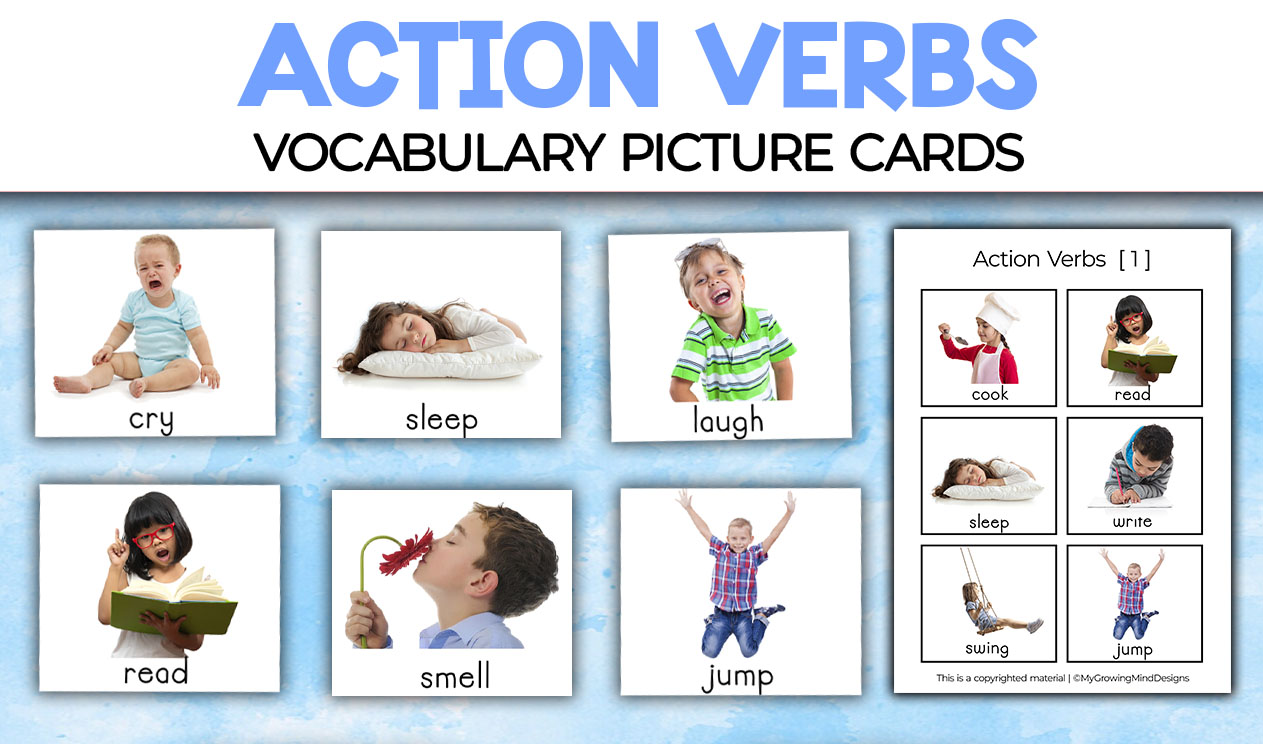Hi Teachers and Families!Are you looking for a versatile and visually engaging resource to help your students build their language and communication skills? These Action Verbs Picture Flashcards are perfect for supporting a range of learning needs, including speech therapy, ESL vocabulary development, interventions for students with Autism, and special education goals.

What’s Included in this printable?
This set features 60 action verbs represented through clear and appealing illustrations, covering everyday actions like:
- Basic actions: eat, drink, jump, walk, run.
- Social behaviors: hug, kiss, smile, laugh, talk.
- Functional tasks: cook, clean, brush, write, read.
With these flashcards, you’ll have everything you need to create engaging activities for diverse learners.
Why Are These Flashcards Useful?
1. Builds Vocabulary and Communication Skills
Students can learn to identify and name actions, which is a foundational skill for language development. For ESL learners, this is a fantastic way to introduce verbs in context. For students in speech therapy, these cards encourage clear articulation and expressive language.
2. Encourages Active Participation
Whether you’re working with individuals or groups, the flashcards are ideal for interactive activities like charades, matching games, or storytelling.
3. Adaptable for Different Needs
These cards can be used in various ways, depending on your students’ goals. For instance:
- Autism interventions: Use them as part of visual schedules or role-playing activities to teach everyday routines.
- Speech therapy: Practice describing or sequencing actions with complete sentences like, “She is brushing her teeth.”
- Special education: Support communication by pairing the cards with AAC devices or PECS systems.
Ideas for Using These Flashcards in the Classroom
1. Action Verb Charades
Divide your class into small groups. One student picks a card and acts it out, while others guess the verb. This is a fun way to get everyone moving and thinking about the meaning of each word.
2. Verb Sorting
Create categories like “Indoor actions” vs. “Outdoor actions” or “Quiet actions” vs. “Loud actions.” Have students sort the cards into the appropriate groups.
3. Sentence Building Practice
Challenge students to create sentences using the verb on their card. For example, if the card says “swim,” a student might say, “I swim in the pool every summer.”
4. Story Starters
Lay out a few cards and ask students to create a story involving all the actions shown. This encourages creativity and helps with sequencing skills.
Tips for Differentiation
- Younger learners: Focus on naming and identifying the actions.
- Older or more advanced learners: Use the flashcards to practice conjugating verbs in different tenses, such as past, present, and future.
- Visual learners: Pair the cards with real-life demonstrations of each action to reinforce understanding.
- Fast finishers: Ask them to write a paragraph or short story using as many of the verbs as possible.
I love how adaptable these flashcards are! They’ve been a game-changer in my classroom for making vocabulary practice more engaging and interactive. How do you think these could fit into your lessons?
Happy teaching, friends!

